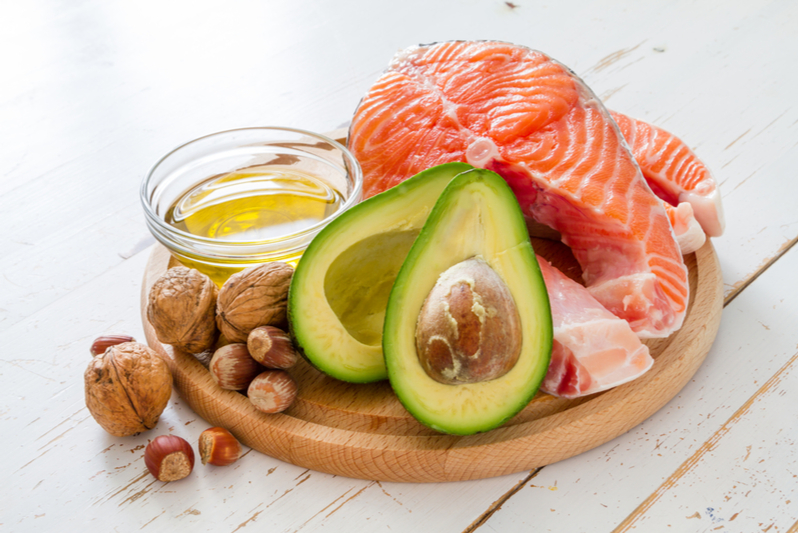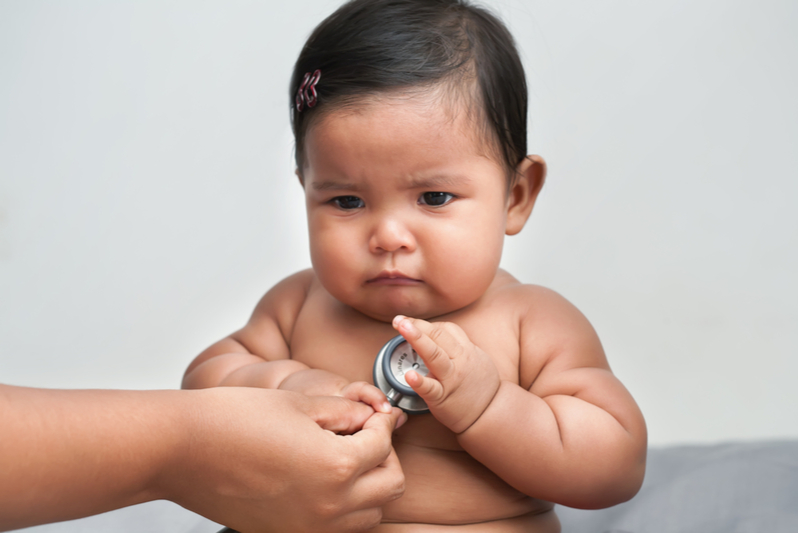Whole milk, rather than reduced-fat milk, can help to prevent childhood obesity. So says a new review of 28 studies which suggests that children who drink whole milk are 40 percent less likely to be overweight or obese compared to children who drink only reduced-fat milk. These findings fly in the face of current international guidelines, which recommend that children drink only reduced-fat cow’s milk from the age of two, in order to lower the risk for obesity. And yet, we cannot ignore the implications of the review by researchers at St. Michael’s Hospital. Taking in more, instead of less fat, may be the thing that can help keep our children from becoming overweight or obese.
For years, nutritionists have told us that one of the reasons our kids are getting fat is that they need to reduce the fat in their diets. But none of the 28 studies looked at by Dr. Jonathon Maguire, a pediatrician at St. Michael’s, and his team of researchers, suggested that children who drank reduced-fat milk lowered their risk for becoming overweight or obese. This is no small matter, considering that the total number of children represented by the review came to almost 21,000 kids between the ages of one and 18 years old. A full 18 out of 28 studies suggested, in fact, the opposite conclusion: kids who drank whole milk were less likely to be overweight or obese.

“The majority of children in Canada and the United States consume cow’s milk on a daily basis and it is a major contributor of dietary fat for many children,” said Dr. Maguire, who serves as lead author of the review. “In our review, children following the current recommendation of switching to reduced-fat milk at age two were not leaner than those consuming whole milk.”
But Dr. Maguire, who in addition to his role at St. Michaels is also a scientist at the MAP Centre for Urban Health Solutions, cautions that we still don’t know that it was the whole milk that lowered the risk for overweight and obesity in children. Maguire hopes to go on to do further research to establish the cause and effect of whole milk in lowering risk of obesity in a randomized controlled trial. “All of the studies we examined were observational studies, meaning that we cannot be sure if whole milk caused the lower risk of overweight or obesity. Whole milk may have been related to other factors which lowered the risk of overweight or obesity,” said Dr. Maguire, who adds that “A randomized controlled trial would help to establish cause and effect but none were found in the literature.”

Adults who have been reading up on low carb high fat diets and who may even have adopted a ketogenic or keto diet, are aware that current accepted nutrition guidelines are problematic. They may have read investigative science writer Gary Taubes on Why We Get Fat, and know that the real culprit in gaining too much weight, is sugar. And if you’ve read that far, you know that every carbohydrate, whole grain or white, complex or not, breaks down into sugar. It is these carbohydrates, and not fat, that make us—and our children—fat.

The wheels turn slow in getting the powers that be to understand that to really tackle the epidemic of childhood obesity, we’re going to have to completely change our way of thinking about nutrition. And the change must begin at the top with changing official dietary recommendations on how our children should eat. Giving kids reduced-fat milk was wrong. We know that now.

Let the guidelines now reflect a change in thinking about fat and its effect on the way children accumulate body fat. It’s time experts realized the impact of a high carbohydrate diet on our children’s health, and moved the focus there instead of on reducing dietary fat. We can’t expect children across North America to assume a low carbohydrate high fat diet overnight. But we can begin by ditching this silly idea of a breakfast of reduced-fat milk on vitamin-fortified, high carbohydrate whole grain cereal each morning.
It’s a breakfast designed to make children fat. And as parents, it’s time we stopped being complicit and offered better solutions.
And better breakfasts, too.
Found what you just read useful? Why not consider sending a donation to our Kars4Kids youth and educational programs. Or help us just by sharing!

As a former athlete and as a physician, healthy foods and my farm-subsistence heritage informed my early thoughts on nutrition and the low-fat craze. I was a marathon runner when all the low fat foods (and snacks) hit the market so my indulgences in less healthy fruits, vegetables, and legumes didn’t hurt my waistline – but it got to a point where I HAD to run to get my energy up! On the farm with beans and brown rice as one of the staples, fresh whole milk and a ready supply of eggs – we didn’t have any lack of energy, we just had more work than a winter day would allow.
It wasn’t until I read the writings supporting the scarsdale diet and read Dean Ornish’s thoughts on fat that I became suspicious of all the low fat and anti-egg admonitions. Along with the diet ‘closer to the field’ I adopted and started suggesting a higher fat intake than dieticians and nutritionists recommended FOR CERTAIN PEOPLE. Old wisdom can be found in the most ridiculous of places…..”Jack Sprat could Eat NO FAT and his wife could Eat NO LEAN”. That sums up the Scarsdale/Ornish world views nicely!!! There are people who need high fat in a nutritious setting – fresh foods, very low processing of foods – for their development and health. Those people are children! Almost across the board, more fresh foods, more natural fats (including whole milk, eggs, and all kind of baked goods like cobblers and pies with lower levels of sweeteners – more honey or molasses, less sugar and absolutely no artificial sweeteners).
When you get to the adult body form, you have to access how your body manages food and famine – Most athletes eat voraciously and never learn if they gain easily on any overabundance or if they are naturally preset for slight frame and high metabolism. By the time they figure it out, they are well on their way to type II diabetes (ie., adult onset or diet induced diabetes) versus autoimmune induced diabetes.
For adults – hold to your 2%, don’t hesitate to cook with cream and whole milk – limit your portions and model the best food behaviors you can. But don’t starve your children of essential nutrients and substitute processed foods to satisfy their cravings. By the way – pasteurization of milk products IS a good thing, that processing I heartily endorse – but children are developing their own hormones from their necessary omega 3 and essential fat intakes – please don’t feed them like they are tiny adults. And don’t soothe them with food rewards either!
While I am pro-whole milk, and as an adult I will drink cream in my coffee and 2% milk on the table, I make sure my children had a broad mix of natural, unprocessed (other than pasteurization), close to the field foods in almost unlimited quantities. They have grown up lean and healthy, they are both taller than me, and have shown no nutritional abnormalities. Studies will continue to bear out the specifics of the childhood nutritional needs and continue to confound folks who believed the ADA and the presumed nutritional content of our highly processed food supply. One day we will be able to quantify how bad our nutritional philosophy has been to children from the baby-boom onward. But not all fats are created equal and our bodies were designed to handle fats, vitamins, carbohydrates in their natural form so much better than in pills and elixirs.
Do your children a favor – use the least processed and closest to fresh food you can. Organic should be cost-effective but wash non-organics and nutritionally they may be close enough if money for food is an issue. Reduce the red meat intake to once or twice a week (that does include fowl, a tremendous increase in obesity after the fried food chains spread across America), and if possible, use butter instead of margarine. Not only does it taste better, but I believe it will be proven to be better for you.
Oh – for young girls who are maturing faster – look into organic milk, reduced processed foods during the formative years, and question what compounds are making their way into our daughter’s water, foods, and drinks. There are way to many pressures on our children’s minds without having youngsters become young adults 10 years before their brains start to mature into the executive function capable brains of the mid-twenties.
So many variables at work here.
They always said that breakfast is the most important meal and for so many it’s the most reliable meal.